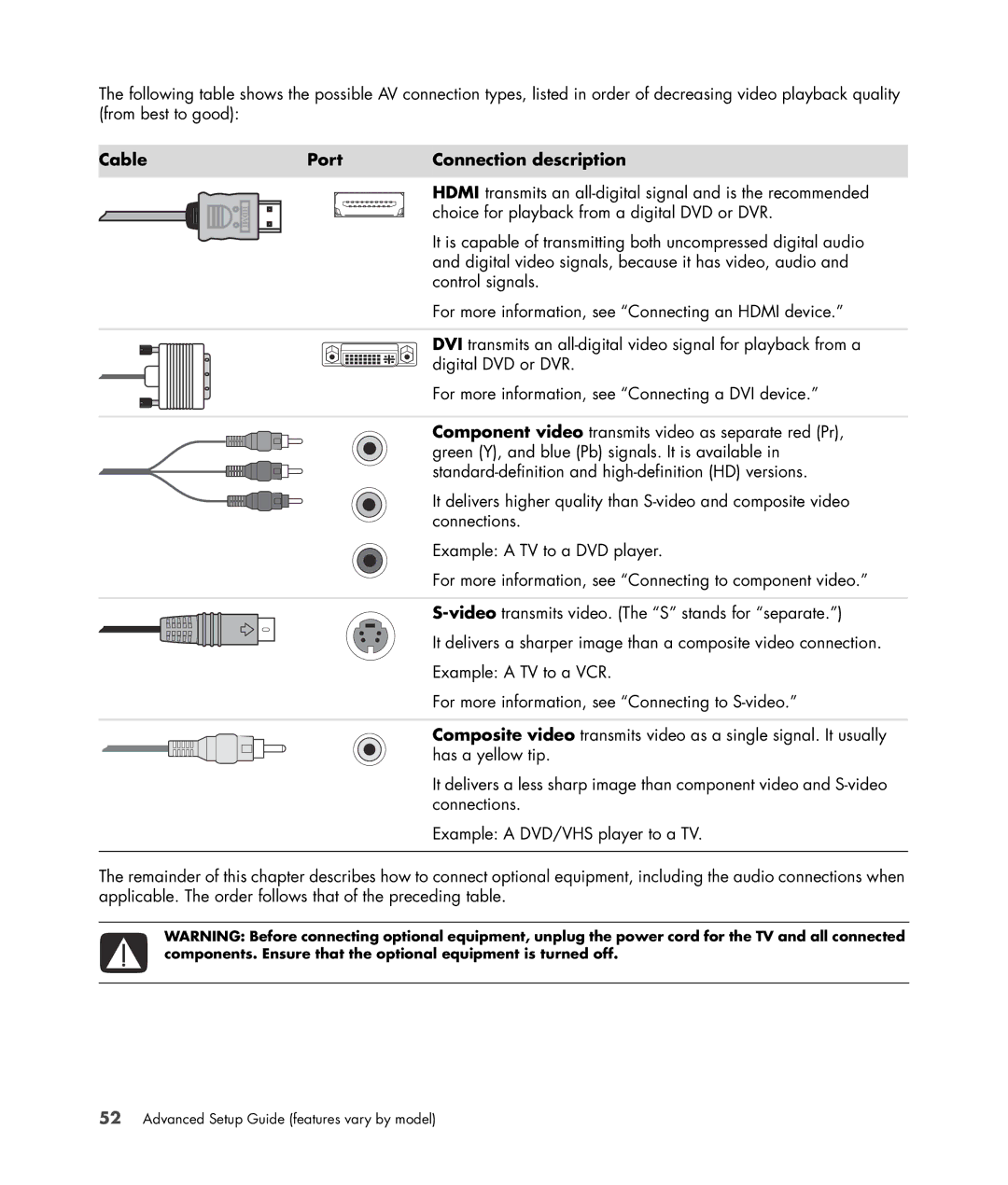
The following table shows the possible AV connection types, listed in order of decreasing video playback quality (from best to good):
Cable | Port | Connection description |
|
|
|
HDMI transmits an
It is capable of transmitting both uncompressed digital audio and digital video signals, because it has video, audio and control signals.
For more information, see “Connecting an HDMI device.”
DVI transmits an
For more information, see “Connecting a DVI device.”
Component video transmits video as separate red (Pr), green (Y), and blue (Pb) signals. It is available in
It delivers higher quality than
Example: A TV to a DVD player.
For more information, see “Connecting to component video.”
It delivers a sharper image than a composite video connection.
Example: A TV to a VCR.
For more information, see “Connecting to
Composite video transmits video as a single signal. It usually has a yellow tip.
It delivers a less sharp image than component video and
Example: A DVD/VHS player to a TV.
The remainder of this chapter describes how to connect optional equipment, including the audio connections when applicable. The order follows that of the preceding table.
WARNING: Before connecting optional equipment, unplug the power cord for the TV and all connected components. Ensure that the optional equipment is turned off.
